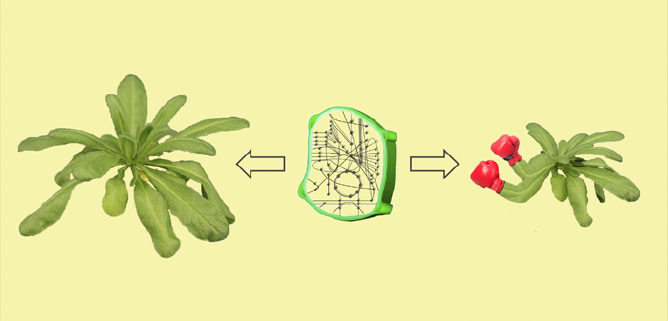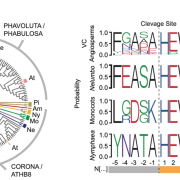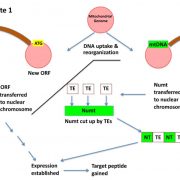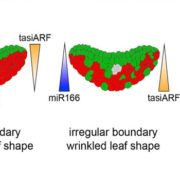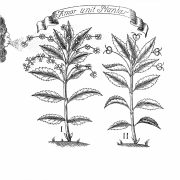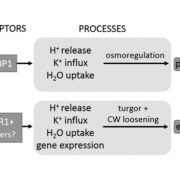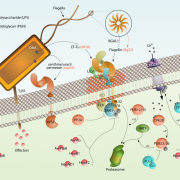To Grow or to Defend: That is the Question for Plant Central Metabolism
Fusari et al. perform GWAS to explore primary plant metabolism https://doi.org/10.1105/tpc.17.00232
By Corina M. Fusari and Rik Kooke
Background: Primary metabolites such as sugars, organic acids, and amino acids are essential chemical compounds that drive plant growth and development by providing the carbon and energy needed for cell division, expansion, and maintenance and for the production of stress and defense compounds. Primary metabolites form a strongly interconnected network, with individual metabolite levels determined by enzyme activities. Enzymes control the output of this network and ultimately, growth. Most plant characteristics, including metabolism, vary among different plant genotypes of the same species. Genetic mapping can be used to identify genes controlling variable features using a mapping population, typically obtained either by crossing two individuals (biparental mapping) or by using a natural population of individuals that shows variation in the targeted feature (genome-wide association studies, GWAS). Individuals from the population are then analyzed for the trait of interest and genotyped with molecular markers. Biparental mapping has been used to identify genes controlling metabolite levels, and occasionally enzymes. Enzyme abundance can be regulated by changes in genes encoding individual enzymes (in cis) or in other genes (in trans). While all metabolic components are highly coordinated, it remains unclear what generates the strongly connected metabolite networks observed in mapping populations.
Question: We performed GWAS in Arabidopsis thaliana to identify new genes involved in regulating plant primary metabolism and to search for regulatory hubs that generate coordinated changes in many metabolic traits.
Findings: We identified polymorphisms (DNA marker variations) in five genes (UGP1, VAC-INV, APL1, SIS, FUM1) responsible for variation in the activity of enzymes involved in sucrose synthesis and degradation, starch synthesis, and organic acid synthesis. For UGP1, two different sequences (alleles) coexist, leading to individuals with high and low enzyme activity; both have been maintained throughout evolution. For VAC-INV, the differences in activity levels result from combined mutations in its promoter and coding region that have occurred at different times in evolution. In addition, ugp1, vac-inv, and apl1 mutants have altered seed phenotypes. This suggests that seed development is especially sensitive to minor lesions in metabolism that have little effect at other stages in the plant’s life. We identified genes involved in transport, protein interactions, and protein degradation that regulate specific metabolites or enzymes (trans-regulation). We also found 14 genes controlling various metabolic components at the same time (pleiotropic regulation). The strongest pleiotropic hub was found at ACCELERATED CELL DEATH6 (ACD6), affecting six enzyme activities, three metabolites, protein, and biomass. ACD6 was previously linked to plant defense, spontaneous cell death, and plant biomass. We now know that ACD6 strongly contributes to the natural genetic variation in central metabolism in Arabidopsis, revealing a compromise between metabolism and defense against biotic stress.
Fusari, C.M., Kooke, R., Lauxmann, M.A., Annunziata, M.G., Encke, B., Hoehne, M., Krohn, N., Becker, F.F.M., Schlereth, A., Sulpice, R., Stitt, M., and Keurentjes, J.J.B. (2017). Genome-wide Association Mapping Reveals that Specific and Pleiotropic Regulatory Mechanisms Fine-tune Central Metabolism and Growth in Arabidopsis. Plant Cell https://doi.org/10.1105/tpc.17.00232


